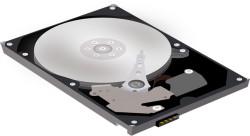 Defragmenting a hard drive in Windows 10 is a simple and easy to do activity and it is essential to the well-being of your computer. If you are someone who stores lots of data on your hard drive in Windows 10, and delete files often, then your hard drive needs to undergo a defragmentation.
Defragmenting a hard drive in Windows 10 is a simple and easy to do activity and it is essential to the well-being of your computer. If you are someone who stores lots of data on your hard drive in Windows 10, and delete files often, then your hard drive needs to undergo a defragmentation.
What does defrag a hard drive in Windows 10 mean?
Fragmentation is a process that makes your hard disk work hard. It slows down the performance of the system. Defragmenting is a process by which the computer rearranges the fragmented data, putting related information in one place and allows your hard disk to perform to maximum levels. Defragmenting the hard disk in a Windows 10 operating system means that you are rearranging the fragmented data and improving the performance of your hard disk, so that it is more efficient and fast. Defragmentation can be done automatically as well as manually.
How Fragmentation Occurs?
When you install new apps or save files to your hard drive in Windows 10, the computer stores this data on an internal hard disk. When the user deletes any of this data, fragments are created. So the next data you want to store demands the PC to store it in fragmented blocks because there is no more contiguous space. Because they are stored in fragmented blocks, when you try to use them, the speed will be low.
Steps to Perform Defragmentation in a Hard Drive in Windows 10
First, the user needs to select the drive he wants to defrag, for most it will be drive C. Right click on the drive and select the option “Properties.” Now click on the “Tools” tab and select the option “Optimize.” The Windows 10 operating system provides you with the option to “Analyze.” It may take some time, especially if you have not defragmented your hard drive for a long time. After analysis, it will display the percentage of fragmented files in the drive. You can forgo this step is you wish. After the results are displayed, the user can perform “Optimize” action. Again, this may take some time. Until the defragmentation process is done, you need to ensure that the system is isolated from all tasks. The user can also set the frequency in which defragmentation will automatically be carried out. By setting that, the user can make sure that defragmentation process is done regularly in their system.
What Are the Common Problems of Fragmentation?
We can classify the common problems faced by fragmentation of a hard disk into two categories.
- Allocation Problem: The most common problem is premature resource exhaustion. It results in system failure. To avoid this, it is important to perform a defragmentation for your hard drive in Windows 10 on a regular basis.
- Performance Problem: Fragmentation causes poor performance of your hard drive in Windows 10 Memory fragmentation is a serious problem and can lead to a system crash. It is a long and tiring process to recover your system after a memory fragmentation crash, so before your system reaches that point, it is recommended to perform a defragmentation.
How Defragmentation Works?
To improve the performance and overcome problems caused by fragmentation, defragmentation of your hard drive in Windows 10 system is essential. Defragmentation corrects fragmentation and stores the data in contiguous space in the hard drive.
Conclusion
By doing defragmentation, you can ensure that your system performs well and allows applications to run smoothly. Defragmentation should be done on a regular basis. It is the best way to make sure that your hard drive in Windows 10 performs to its level best.

 Email article
Email article



